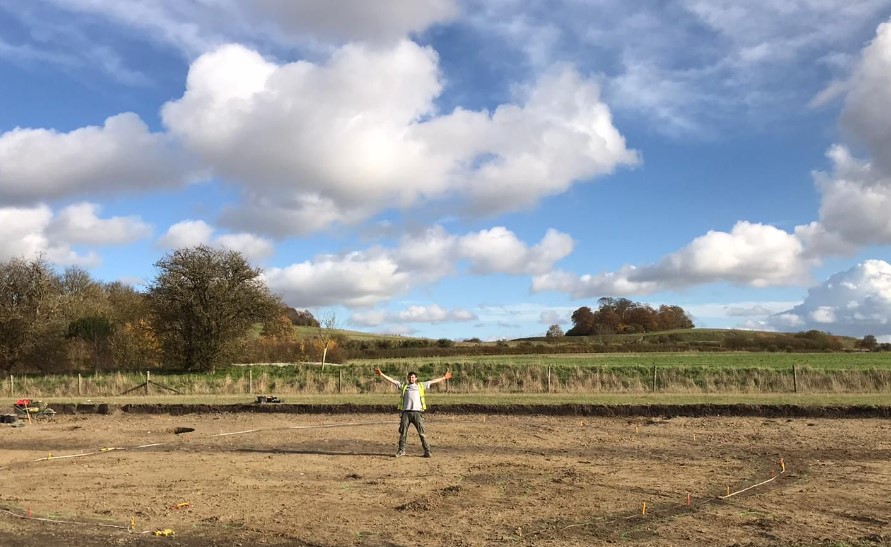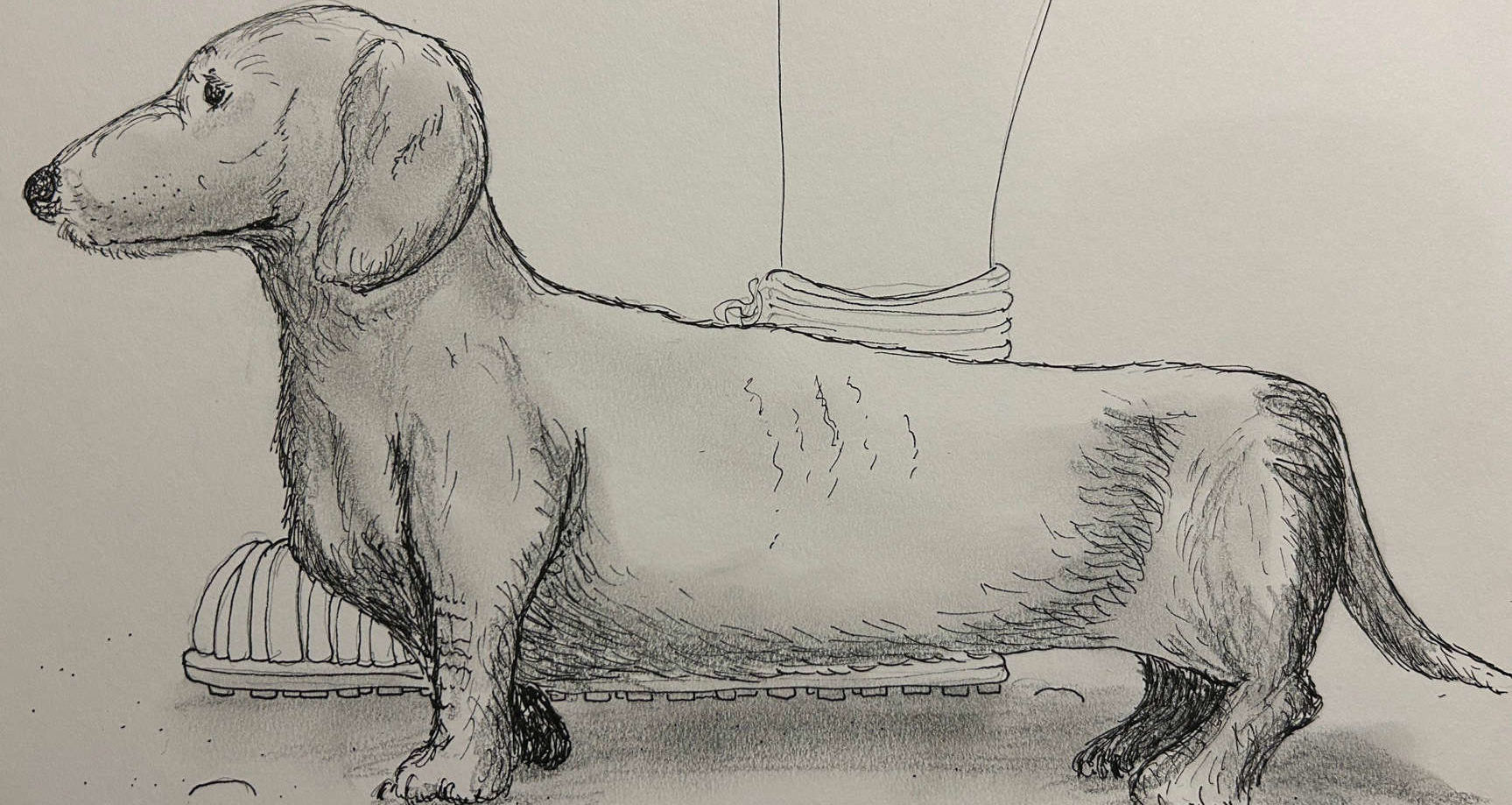Archaeologists discover remains of tiny Roman ‘lap dog’ at Wittenham Clumps
An archaeological dig that took place at our very own Wittenham Clumps, has uncovered the 1,800 year-old remains of a tiny Roman dog.
A much loved little pet
At just 20 cm (7.8 inches) tall at the shoulder, researchers say that the ancient pooch is one of the five smallest Roman dogs ever discovered in the UK, and that its unusually small size means it is likely to have been a much-loved pet. The little dog, which is thought to have been female with bowed legs, would probably have had a similar stature to a dachshund, but been closer in size to a chihuahua.
The animal’s remains were unearthed during an archaeological dig at our headquarters in Little Wittenham by a team of archaeologists from DigVentures, and later identified by zooarchaeologists examining the bones in the lab.
Clumps discoveries galore
Affectionately known locally as ‘The Clumps’, the site is owned and managed by Earth Trust, and features the ancient hillfort Castle Hill, which is registered as a scheduled ancient monument overlooking the River Thames, approximately 15 miles from Oxford and 50 miles from London. Much-loved by modern day dog owners and walkers near and far, it is the most highly visited free to access greenspace in the region.
During the excavations, archaeologists discovered a large Roman villa, as well as the earlier remains of an earlier Iron Age settlement. The animal’s remains were found within one of the 42 Roman burials associated with the villa, but it’s unclear whether the dog was buried with its owner or buried separately, say the researchers. In total, the remains of at least 15 small-medium sized dogs (including the tiny lapdog) were recovered from the Roman villa, which was occupied for around 150 years between the 3rd and 4th centuries AD.
Among many other discoveries at the villa, archaeologists found domestic items such as cooking utensils including a ladle, colander or strainer, cleaver, and storage jars, as well as personal items like brooches, bracelet, a ring, leather-working tools, hair combs, medical spatula, and even the hobnails from a pair of Roman shoes.
“This site provides a snapshot of domestic life in Roman Britain; it’s like peering into someone’s home. The villa would have been occupied by a relatively wealthy Roman family, who ran a farm with an assortment of working animals, including hunting or herding dogs – as well as this tiny canine” said Maiya Pina-Dacier from DigVentures.
Life at the villa
Archaeologists found that the villa’s residents were also keeping chickens, geese, pigs, cattle, sheep or goats, and horses, donkeys or mules for food and farming. But not all animals were kept for practical purposes; several ravens and crows were also discovered which may have been used in ritual or ceremonial activities rather than for food. In the Iron Age part of the site, the team also discovered the remains of a decapitated dog, similar to a greyhound, buried in a pit along with a cow skull.
While most of us probably think of small dogs as a modern trend associated with a certain kind of luxury lifestyle, discoveries like this make it clear that the companionship of small dogs has been enjoyed in Britain for at least 1,800 years.
A concise history of a concise dog
The presence of small dogs in Britain first appears with the arrival of the Romans. Until then, archaeologists typically only find medium-large sized dogs, which are generally thought to have been kept by Iron Age for practical purposes like hunting, herding, killed for fur, or sometimes sacrificed. But once the Romans arrive, smaller dogs become increasingly popular.
Once the Romans arrive, archaeologists begin to see at least two types of small dog in Britain, including miniature or toy dogs, which are the same shape as larger dogs but smaller; and dwarf dogs, arising when a puppy is born with chondrodysplasia, which results in short and bowed legs, and are then bred to produce bowed-legged dwarf breeds, like the modern dachshund.
“While it’s possible that this dog was used for hunting, we know that Romans in other parts of the empire had begun to breed and keep small dogs as pets. In the UK, most of the small dogs we find measure between 22 – 37 cm in shoulder height, making this individual particularly small” said Hannah Russ and Sarah Everett, the zooarchaeologists who analysed the animal remains.

Illustration of tiny Roman dog based on the remains found at the site (credit: The Telegraph)
“The fact that this dog was so small and had bowed legs suggests that she probably wasn’t bred for hunting. This, along with the fact that she might have even been buried with her owner, makes it far more likely that she was kept as a house dog, lap dog, or pet” they said.
Come see for yourself
The remains, along with other artefacts from the dig, will be displayed for the very first time in a pop-up exhibition at Earth Trust this August, as part of Clumps Go Ancient – a family-friendly festival that will bring the discoveries to life.
“Earth Trust’s vision is a society where people and nature thrive in balance. In order to achieve that balance, there is so much we can learn from the historic people of the Clumps. We’re delighted that DigVentures’ discoveries uncover the truth about just how special Wittenham Clumps has been to people for thousands of years.
“This summer we’ll be hosting Clumps Go Ancient: a family-friendly archaeology festival that will include a pop-up exhibition featuring never-before-seen artefacts from the dig, and use hands-on activities and demonstrations to bring these discoveries about the people of Wittenham Clumps, and their animals, to life.
Humans (past, present and future) are an integral part of the story of nature and green spaces, and these fascinating finds remind us of this relationship. From the Iron Age communities who created the hillfort that is now Castle Hill and the Roman families who later lived downslope; to the farmers and tenants who manage the land today – this area has been shaped by human use and intervention throughout the ages.” said Anna Wilson, our Head of Experience and Engagement.
Clumps Go Ancient festival: 5th – 6th August 2023
For one weekend only, this family-friendly festival will bring the archaeological discoveries to life, with a pop-up exhibition displaying key artefacts from the dig, as well as demonstrations from living history, hands-on activities, and more. Tickets are available at earthtrust.org or search online for ‘Clumps Go Ancient’.
From the Iron Age communities who created the hillfort that is now Castle Hill and the Roman families who later lived downslope; to the farmers and tenants who manage the land today – this area has been shaped by human use and intervention throughout the ages.” Anna Wilson, Earth Trust Head of Experience and Engagement.